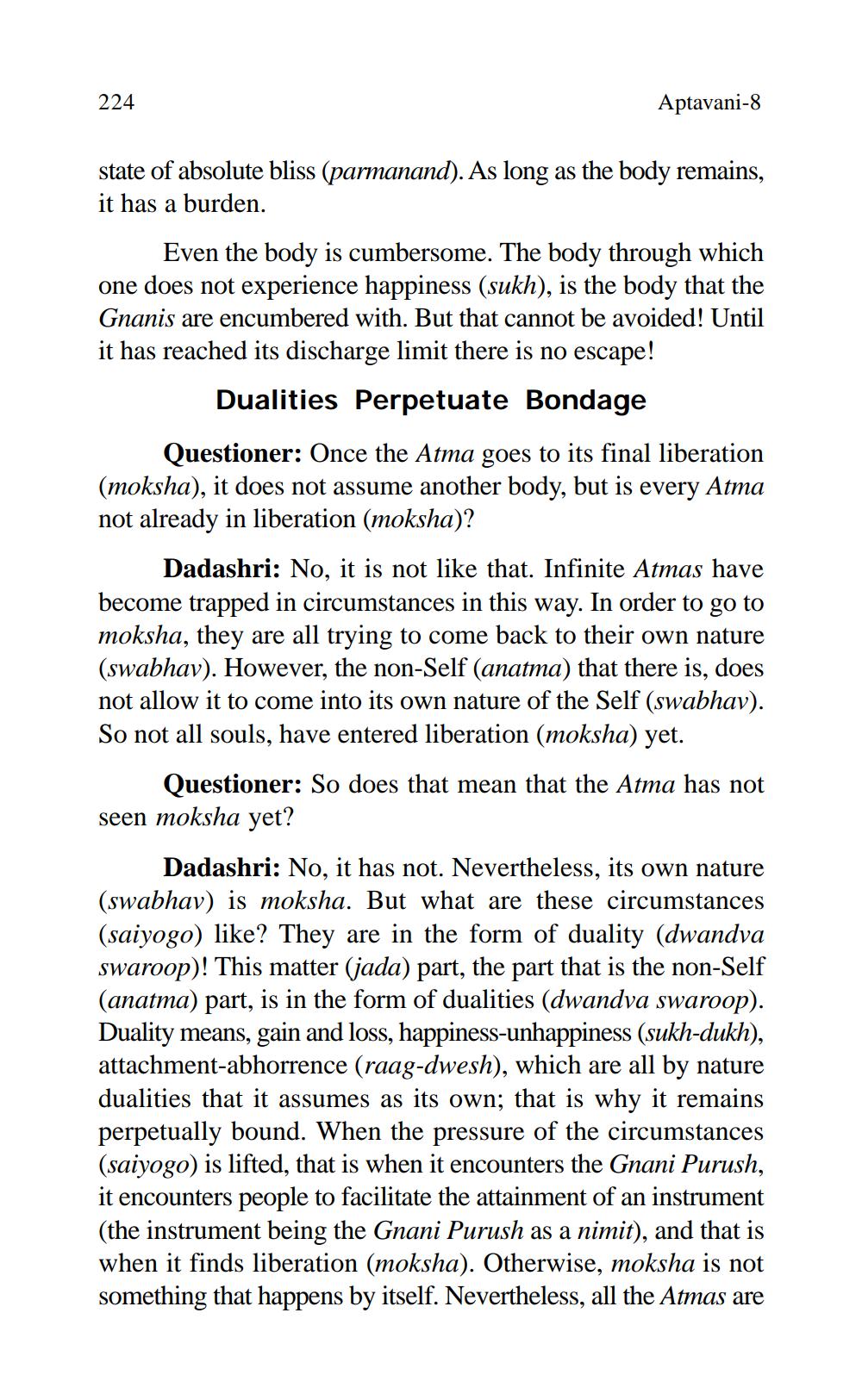________________
224
Aptavani-8
state of absolute bliss (parmanand). As long as the body remains, it has a burden.
Even the body is cumbersome. The body through which one does not experience happiness (sukh), is the body that the Gnanis are encumbered with. But that cannot be avoided! Until it has reached its discharge limit there is no escape!
Dualities Perpetuate Bondage Questioner: Once the Atma goes to its final liberation (moksha), it does not assume another body, but is every Atma not already in liberation (moksha)?
Dadashri: No, it is not like that. Infinite Atmas have become trapped in circumstances in this way. In order to go to moksha, they are all trying to come back to their own nature (swabhav). However, the non-Self (anatma) that there is, does not allow it to come into its own nature of the Self (swabhav). So not all souls, have entered liberation (moksha) yet.
Questioner: So does that mean that the Atma has not seen moksha yet?
Dadashri: No, it has not. Nevertheless, its own nature (swabhav) is moksha. But what are these circumstances (saiyogo) like? They are in the form of duality (dwandva swaroop)! This matter (jada) part, the part that is the non-Self (anatma) part, is in the form of dualities (dwandva swaroop). Duality means, gain and loss, happiness-unhappiness (sukh-dukh), attachment-abhorrence (raag-dwesh), which are all by nature dualities that it assumes as its own; that is why it remains perpetually bound. When the pressure of the circumstances (saiyogo) is lifted, that is when it encounters the Gnani Purush, it encounters people to facilitate the attainment of an instrument (the instrument being the Gnani Purush as a nimit), and that is when it finds liberation (moksha). Otherwise, moksha is not something that happens by itself. Nevertheless, all the Atmas are




